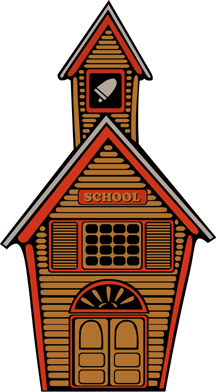 For the first time, school officials have published an annual report with information on demographics, spending, MCAS scores, educational programs and more, as well as data comparing Lincoln schools to others in the area on various measures.
For the first time, school officials have published an annual report with information on demographics, spending, MCAS scores, educational programs and more, as well as data comparing Lincoln schools to others in the area on various measures.
The report is available on the Lincoln Schools website in two forms: a series of slides with charts and graphs, and a three-page executive summary. The report by the School Committee and Lincoln Public Schools administration is the result of an initiative by the Finance Committee to provide the town with information about the operations and performance of town agencies.
“It’s helpful because it takes information and really condenses it into its most salient points,” said Superintendent of Schools Becky McFall.
Some of the slides compare Lincoln’s school data with that of six other towns: Bedford, Concord, Lexington, Sudbury, Wayland and Weston. Snapshot statistics in the report, which uses data form the 2011-12 school year, include the following:
- In the 2011-12 school year, there were 1,149 students in grades K-8 in the Lincoln Public Schools — 523 students at Hanscom and 626 on the Lincoln campus. In addition, there were 119 children at the Lincoln Preschool. The report notes that a 10-year trend of declining enrollment in the district may be ending.
- In 2011-12, there were 110.3 full-time equivalent teachers in the district, which includes the schools on the Ballfield Road and Hanscom sites.
- The student/teacher ratio for the district was 9.8, and the average class size was 16.2. Lincoln has the lowest student/teacher ratio of the seven towns studied.
- Lincoln has by far the largest percentage of METCO students in its district at 14.5 percent. The next highest percentage Weston with 7.5 percent.
- The average teacher salary in the district was $81,963. Since 2000, the average teacher salary in the district has risen at an average annual rate of 4.55 percent.
- There were 179 students in special education in the preschool and grades K-8. Of those students, 88.4 percent spent at least 80 percent of their school time in general education classrooms.
- The gross expenditure per pupil in the district in the 2010-11 school year (the most recent reported) was $20,776. The net cost per Lincoln student funded directly from Lincoln tax dollars was $15,598.
- Ten percent of children in the district are from low-income families, the second-highest percentage in the seven-town area.
- MCAS scores for the Lincoln School are comparable to those in neighboring towns. Scores have been tracked over time for the students who were in eighth grade at the Lincoln School in 2011-12:
- On the English language section, 52 percent of the eighth-graders at Lincoln School received “Advanced” scores, up from just 8 percent in 2008. The percentage scoring “Needs Improvement and Warning” has dropped from 33 percent in 2008 to 5 percent in 2012.
- On the math section, the percentage of students scoring “Advanced” on the math section of the MCAS has gone up each year, from 29 percent in 208 to 55 percent in 2012. However, the report notes that there is also “a persistent group of underperforming scores” in that group—20 to 24 percent of the class has scored “Needs Improvement and Warning” each year.
- On the science and engineering section, there has been a large middle ground ove the years, with students scoring “Proficient” ranging from 48 percent to 57 percent. However, the “Advanced” scores have risen from 2 percent in 2009 to 21 percent in 2012, while the “Needs Improvement and Warning” scores have dropped from 47 percent in 2009 to 21 percent in 2012.
The School Committee invites residents to provide feedback about the types of information included in the report for consideration in refining the report for future years. Please send comments and ideas to schoolcomm@lincnet.org.
Leave a Reply